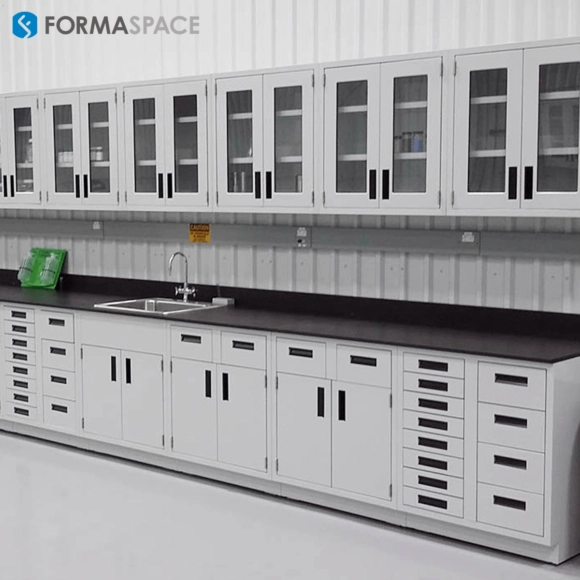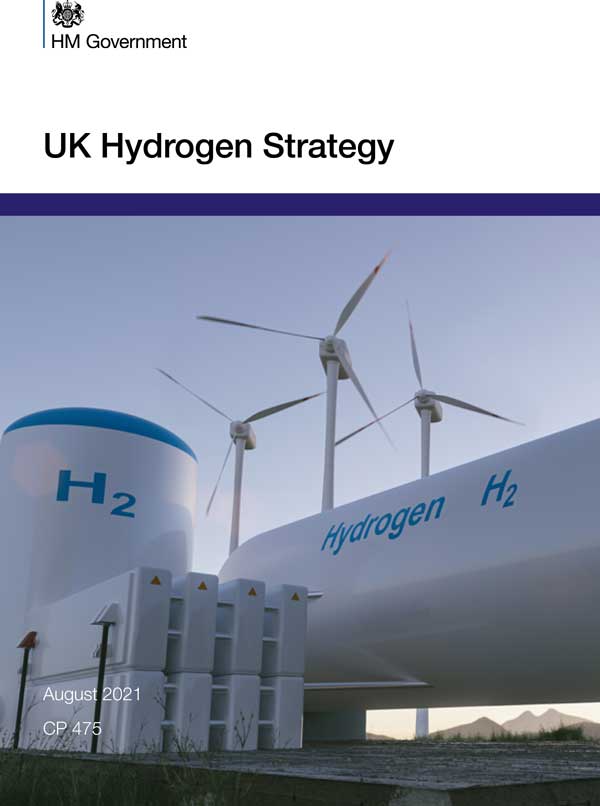Is Hydrogen the Next Big Thing?
Time flies. It’s been six years since we reported on the introduction of Toyota’s hydrogen-powered passenger car, the Murai.
A lot’s happened since 2015, and for most of us, we’d probably assume that the battle between electric and hydrogen-powered vehicles has long been settled in favor of electric.
But the battle between these competing technologies (and the requisite billions of infrastructure required to back them up) is heating up again.

We’re on the cusp of war to establish the dominant energy paradigm for the next 50 years.
And it will prove to be a far bigger rivalry than some of the most epic technology battles of the past, including the video player competition between Sony’s Betamax and JVC’s VHS tape format or Thomas Edison’s epic fight for a direct current electric power grid — which ultimately lost out to Westinghouse’s alternating-current system.
The question before us is whether we will have a future power-grid primarily based on solar and wind derived electric power, stored in massive batteries, or if we will move to an infrastructure that chiefly relies on hydrogen to store energy, heat / cool our homes, and power our vehicles (including airplanes) — or will we see a mixed solution that elements aspects from each of these rival competing systems.
Billions of dollars are on the line, and the temperature of the planet may hang in the balance, which makes us think of Benjamin Franklin’s apocryphal quote after signing the Declaration of Independence.
“We must all hang together, or … we shall all hang separately.”
Billions to be invested Worldwide to Create a New Hydrogen Economy
So where does hydrogen fit in the future plans of the world’s energy markets?
If we look at proposed plans around the world, hydrogen figures to be a big player.
With the recent climate disasters in mind, many of the world’s political leaders are acting now to create investment plans for hydrogen-based energy infrastructure to replace our current system that relies primarily on burning fossil fuels.

Let’s take a survey of the current plans.
▪ United States
The US Department of Energy has created a comprehensive plan to transform the American energy market based on a solar and hydrogen infrastructure.
President Biden is on board and has been touting green energy infrastructure plans as a way to create new high-paying jobs and help the country transition to renewables.
The administration’s latest goal is to derive 50% of our electricity from solar by 2050 and to dramatically ramp up solar panel production in the USA. But while solar is grabbing the headlines, hydrogen is also a major component of the administration’s agenda.
The question is how to pay for it.
The bi-partisan “Infrastructure Act” that passed the Senate calls for a series of demonstration projects, including $8 billion to fund regional hydrogen “hubs”(for producing, transporting, and storying hydrogen, including developing new carbon capture technology) and calls for a National Clean Hydrogen Strategy and Roadmap and Clean Hydrogen Manufacturing Initiative.
Will there be more funding?
That question hangs in the balance. The “Infrastructure Act” has only passed the Senate, while the House crafts its own $3.5 trillion budget that it hopes to pass via budget reconciliation procedure. One or both could pass, but much remains to be seen. We likely won’t know what will be funded and what gets chopped until mid-October.
▪ Canada
Like the US, Canada is a fossil fuel energy producer, so its new plans for a future hydrogen-based energy infrastructure represents a major policy shift.
As it stands, Trudeau’s Liberal government proposes that Canada could deliver 30% of its energy requirements via hydrogen, and it claims that this would create a $50 billion domestic hydrogen sector with over 350,000 high-paying jobs.
However, a snap Federal election will take place on September 20, 2021, so if the Conservatives win, all bets are off as political power shifts to the oil and gas rich western provinces.

▪ European Union
What about the EU?
The EU is following a similar path to the US in that they are using Coronavirus economic recovery funds to pay for new clean energy infrastructure as part of its goal to be carbon neutral across the bloc by 2050.
The initial plan called for spending €470 billion on hydrogen infrastructure over the next 30 years, with the hopes of generating up to 10 million tons of renewable hydrogen annually (which would require 40 GW of electrolyzers in the EU).
To bootstrap these goals, the EU has established a public-private partnership, the Fuel Cells and Hydrogen Joint Undertaking (FCH JU), to fund the development of clean hydrogen technology. A related investment arm, The European Clean Hydrogen Alliance, is working to coordinate government and private investment.
▪ Germany
Within the EU, Germany has pinned its hopes on being a leading hydrogen technology exporter and also use hydrogen production or for its large chemical industry.
The German government has produced its own national hydrogen strategy (available in German) – but English readers will also be interested in the government’s business opportunities white paper, which outlines the thinking behind their hydrogen initiatives.
Germany is also home to what will be Europe’s largest Polymer electrolyte membrane (PEM) hydrogen electrolyzer to date, the Shell plant on the south side of Cologne. According to Shell, the plant will be able to produce 100 megawatts – a great accomplishment, but some caution is required as this only represents 0.25 percent of the EU’s ultimate goal of 40GW.
▪ United Kingdom
The United Kingdom has been polishing up its environmental credentials leading up to hosting United Nation’s COP 26 climate meeting on November 1.
The overarching goal is for the UK to achieve net-zero by 2050. New this year is the adoption of a “Sixth Carbon Budget” to reduce UK greenhouse gas emissions by almost 80% by 2035 compared to 1990 levels.
In a BBC interview, the UK’s Business Minister Lord Callanan revealed details of the August update to the UK Hydrogen Strategy, which now sets a goal of producing 5GW of clean hydrogen energy by 2030. This is about 12.5% of the EU goal of 40GW but is promised in a much shorter timeframe, e.g. 9 versus 30 years.
▪ Australia
Australia issued its most recent national hydrogen strategy in 2019.
The Australian government’s focus centers around becoming a leading source of hydrogen production for the world’s energy market as well as a low-emissions tech leader.
To support that effort, the government has budgeted $539.2 million in new clean hydrogen, carbon capture, use and storage (CCS/CCUS) projects.
As proof of its ambitions to become a clean energy provider, Australia can point to its privately developed Sun Cable system, an audacious plan to build the world’s largest solar farm (at nearly 58 square miles, it will be 10 square miles bigger than the city of San Francisco) which will produce 10GW of electricity to be sent via overland and underwater cables to Singapore.
What is driving the Investment in a Future Hydrogen-based Economy?
Hydrogen offers several unique benefits over other energy sources.
Here are some of the key factors that are attracting investment in a future hydrogen-based economy.
▪ Control Greenhouse Gas Emissions
The first benefit is that burning hydrogen as a fuel is very environmentally friendly.
Unlike polluting fossil fuel sources which create greenhouse gas emissions, burning hydrogen only produces water vapor.
▪ Battery storage alone may not be sufficient to store all our energy needs
Hydrogen is also promoted as an alternative solution for storing energy.
For example, solar arrays and wind farms that produce large amounts of electricity during sunny/windy days need a way to store it for use at night or on cloudy/less windy days.
Hydrogen storage (in the form of either compressed/liquid hydrogen gas cylinders or fuel cells) can store excess energy produced by renewable sources during the day, making it a competitive alternative to battery storage on the grid.
▪ Batteries are too heavy for some transportation modes
Today’s batteries, while becoming more powerful, are still comparably large and heavy, making them less suitable for powering long-range aircraft or trucks that need to travel extended distances between charging. Compressed hydrogen gas tanks or fuel cells could become a preferred solution for these applications.
▪ Move energy from production sites to distant locations
Solar and wind farms are well suited to dry, sunny locations with ample real estate but are far less efficient in crowded cities or locations closer to the poles where the sun is low in the winter.
We are now seeing new projects on the drawing board to transmit electricity generated by solar farms to distant locations (such as the proposed project mentioned above to generate electricity in central Australia and send it via giant overland and underwater cables to Singapore).
But it’s currently not practical to build transmission lines for longer distances (such as under the Atlantic from Mexico to northern Europe, for example) – so storing energy in the form of compressed liquid hydrogen and shipping it via tanker ships may become the preferred solution instead.
Environmental Watchdogs and Big Energy Critics are Wary of Investments in Hydrogen Technology and Infrastructure
Not everyone is on board with the idea of investing billions of dollars in a new hydrogen-based economy.
These criticisms fall into several broad categories:
▪ Hydrogen Safety Concerns
The number one concern among utility planners and consumers alike has to do with the flammable, explosive nature of stored hydrogen.
Natural hydrogen is invisible and has no smell – making it very difficult to detect leaks without detection equipment.
(Commercial hydrogen suppliers, like their natural gas counterparts, add a noxious smell to make leaks more noticeable.)
As for the explosive nature of hydrogen, all you have to do is summon the phrase “Hindenburg Explosion” to recall that unless handled and stored carefully, hydrogen gas can create disastrous explosions and fires.
▪ Less Efficient than Solar Batteries due to Duplication of Effort
Critics such as Elon Musk (who has a vested interest in battery technology, thanks to Tesla and its various battery subsidiaries) point out that there is a lot of wasteful duplicate effort in converting energy from solar into hydrogen fuel cells or liquid hydrogen storage tanks. (There is an energy penalty in doing this as well, discussed below.)
As battery technology gets better (and cheaper), Musk argues, then why would you invest billions in a duplicate set of infrastructure to support hydrogen “gas” stations, gas pipelines, and other means to distribute hydrogen across the country.
How does Musk really feel? This tweet about hydrogen says all:
▪ Hydrogen has Low Volumetric Energy Density, Necessitating Compression for Transportable Storage
Oil, gasoline, and aviation fuels all have a very high volumetric energy density, which has made them popular transportation fuel sources for over a century.
On the other hand, hydrogen has a very low volumetric energy at normal atmospheric pressure. (To power an airplane with uncompressed hydrogen gas, you’d need an oversized tank the size of the Hindenburg.)
There is a way around this. Hydrogen can be compressed at high pressure or even cooled to a liquefied state, reducing the size of the “tank” needed to power transport.
However, this comes at a cost. It takes significant amounts of energy to compress (or liquefy) hydrogen, a parasitic cost that, depending on the cost of energy, may tip the scales in favor of batteries where they are practical to use instead.
Concerns over Environmental Impact of Hydrogen Production
Up to this point, we’ve talked about the advantages and disadvantages of so-called “green hydrogen,” e.g. hydrogen synthesized using a renewable power source, such as solar or wind power.
Unfortunately, that’s not always the case.
There are many ways to produce hydrogen, all of which require a power source.
To keep track of the different ways to produce hydrogen, the industry has converged on a color code to differentiate which methods are the most environmentally friendly – and those that are the least.
(A similar scale is needed to address the circumstances surrounding “zero-emission” electric cars, which are only as environmentally friendly as the power source that produced the electricity stored in the car’s battery.)
▪ Green Hydrogen:
Produced via electricity sourced from renewable energy sources, such as solar or wind. No greenhouses emitted.
▪ Blue Hydrogen:
Produced via natural gas or methane, using a process called steam reforming. The carbon dioxide emissions from this process are captured to reduce greenhouse gas pollution.
▪ Gray Hydrogen:
Produced via natural gas or methane, using a process called steam reforming, but the carbon dioxide emissions are not captured, creating significant greenhouse gas emissions. (This is the most common method used today.)
▪ Black/Brown Hydrogen:
Produced via black coal or lignite (brown coal). This method produces extensive greenhouse gas emissions.
Blue Hydrogen: A Safe Bridge to Clean Green Hydrogen or a Death Knell Sentence for the Climate?
Whether a new hydrogen economy can help us significantly reduce greenhouse gases depends a lot on how quickly we can adopt green hydrogen.
Blue hydrogen, on the other hand, is a major source of controversy.
There are not (yet) proven methods for capturing carbon emissions at scale – though much effort is going into research, from sequestering carbon dioxide in underground salt caverns to capturing it from the air and converting it into solids or useful products.
Environmentalists worry that investing in blue hydrogen could perpetuate the exiting emissions problems created by the fossil fuel industry.
A new peer-reviewed study from researchers at Stanford University, Robert W. Howarth and Mark Z. Jacobson backs that up.

Howarth and Jacobson found that “blue” hydrogen production emits much more greenhouse gases than originally thought, due in part to the tendency of natural gas or methane to escape during the production process. The situation with “blue” hydrogen is so dire that Howarth and Jacobon conclude using “blue” hydrogen is more harmful than simply burning coal for energy.
Watch This Space: The COP Conference in Aberdeen
Where do we go from here?
All eyes will be on the COP 26 UN Climate Change Conference, which will convene in Aberdeen, Scotland, on November 1, 2021.
In the meantime, be on the watch for new policy announcements by government leaders in the run-up to the conference.
Formaspace is Your Partner for Efficient Work Environments
If you can imagine it, we can build it, here at our factory headquarters today.
Whether you are building a new industrial facility, testing laboratory, or remote monitoring station, Formaspace can help you build the right solution to meet your exact specifications.
Talk to your Formaspace Design Consultant today, and find out why clients such as Apple, Dell Computer, Google, Oculus, SpaceX, and Toyota trust Formaspace.





















